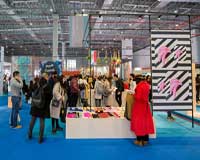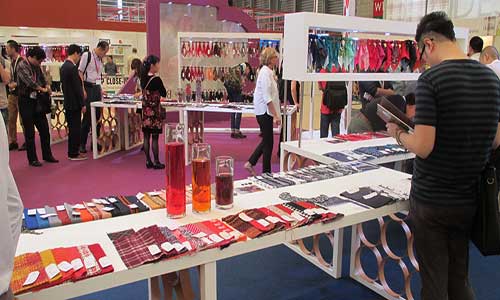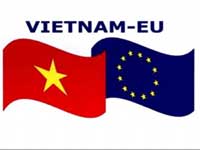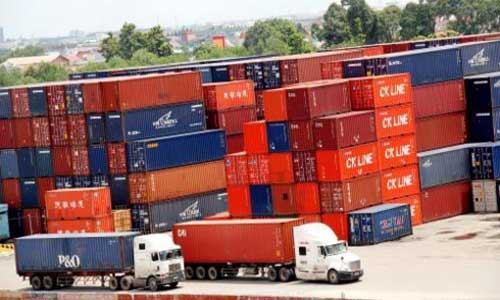FW
Benetton is not yet back on track but is pursuing its investment plan. The clothing group has struggled to take off despite its reorganization that began in 2015, which saw the company refocus on its two main brands, United Colors of Benetton and Sisley, by completely changing its structure.
Benetton nearly doubled its net loss from €46 million in 2015 to €81 million a year later, while it recorded an operating loss of €38 million compared to €19 million the previous year. The results were published in Edizione’s 2016 balance sheet, the holding company which controls 100 per cent of Benetton and the empire of the eponymous family. In 2016, Benetton Group suffered from continued economic stagnation in Europe, with a deterioration in sales and profitability which resulted in a weakening of its financial position. Cash flow went from €85 to €24 million in one year.
According to the textile group it has not slowed down its ongoing transformation projects or its investment plan, and is on track to achieve them as planned without falling into debt. Moreover, Benetton accelerated its investments last year, since they increased by 39.2 per cent compared to 2015, reaching €45 million. Nearly 330 outlets were opened or repositioned in 2016.
Shirts, trousers, jackets, T-shirts and sweaters contribute 75 per cent to Bangladesh’s apparel exports. But during the last fiscal only the sweater segment maintained an upward trend in earnings. Earnings grew by 5.62 per cent. Earnings from shirts declined nine per cent, trousers fell by 4.62 per cent, jackets fell by 6.02 per cent and T-shirts fell by 4.19 per cent.
Among the reasons for the fall in exports are rising production costs, currency fluctuation and a decline in global demand. But a critical factor is sweater units are automated. Prices of sweaters dropped and customers placed more orders in the jacquard category. An automated jacquard machine is not only able to produce diversified and fashionable products, but can also fabricate critical designs.
As for other categories like shirts and T-shirts, they were already competitive and therefore there was no further margin to compromise on.
Bangladesh has more than 500 sweater factories in operation and nearly 60 per cent of these have switched over to automation to ramp up productivity. A manual machine with one operator can produce a maximum of five pieces a day. An automatic machine with one operator can produce about 30 pieces a day. Many owners have opted for automatic machines to remain cost competitive in the long run.

Donear has acquired Grasim Bhiwani Textiles. The acquisition will give the Donear Group world class manufacturing capabilities, an iconic fabric brand and access to marquee customers globally. It will significantly enhance Donear’s product portfolio, give it access to a strong nationwide retail network, wholesalers and multi-brand outlets through which Donear can expand its reach.

Grasim is the country’s largest manufacturer of PV and PW suiting, selling its products under the Grasim and Graviera brands in India and abroad. The biggest strengths of Grasim Bhiwani are its quality-conscious trade partners and global customers, who have been associated with it for a long time.
Grasim Bhiwani caters to international fashion houses in the US and the UK, supplying fabric to them for making garments. These garments are available in some of the largest retail chain stores. Donear aims to build further on Grasim’s existing strengths. Both Donear and Grasim Bhiwani will maintain their individual identities and stay committed to offer the best products and services to their valued customers as one team.
Textile is Donear’s core business. It has a production capacity of around 45 lakh meters a month. Donear also has a strong international presence. With a comprehensive product basket, the company is supplies fabrics to India’s largest brands including Louis Philippe, Van Heusen, Peter England, Blackberry, Arvind, Wills Lifestyle and more.
Only job workers or units with an annual turnover of Rs 20 lakh or more, need to register for GST. However, the textile industry, especially the power loom segment, is not impressed. There are a large number of small job workers with an annual turnover of less than Rs 20 lakh, whom the power loom industry, especially master weavers, has to engage. With exemption from GST registration, master weavers would end up with the reserve charge mechanism.
In other words, master weavers would have to pay duty on behalf of job workers. Decentralised units employ job workers’ services for weaving and embroidery work, which attracts GST at 18 per cent. Units in the powerloom sector feel they should have been given time to first come under formal taxation net before being subject to any duty.
The powerloom sector is also padding up for a double whammy. Much of the yarn twisting and embroidery work is done by women from their homes but labor, which along with power accounts for 80 per cent of input, is not under the input credit net in the GST regime. This would deprive power loom owners of a refund.
The global silk market is projected to grow at a CAGR of 7.8 per cent from 2016 to 2021. Growth can be attributed to technological advancements in sericulture, which directly increases the yield of silk. Moreover silk is a low capital investment industry in terms of technology and labor.
Though demand for silk products is growing in Europe and North America, the Asia-Pacific region is the largest market for silk. It has a large number of textile manufacturers and growing demand from the domestic market. China dominates the silk market in the Asia-Pacific region followed by India. Raw silk is easily available in the two countries. China is the largest producer of silk yarn and textile products. The Asia-Pacific region remains the fastest growing market for silk in terms of value and volume.
Based on type, the mulberry silk segment is projected to lead the silk market. Owing to its high strength, durability, and flexibility, mulberry silk is used in the production of textiles such as apparel, wedding dresses, gowns etc as well as in interiors such as pillows, wall hangings, and upholstery. The growing textile industry in the Asia-Pacific region is driving the demand for mulberry silk in the region.
Abercrombie & Fitch has been changing its image amid a challenging retail market. In 2014, it did away with its iconic moose logo. And in July this year, the brand removed its signature scent from its stores. Instead shoppers will be greeted with the smell of a gender-neutral fragrance that is more in keeping with the current predilection for gender-neutral or unisex fashion.
For the first time in 15 years, the brand has completely updated its jeans line. The new denim line utilizes latest technology and fabrication, including a 360-degree stretch. One of the most obvious changes from Abercrombie’s previous denim offerings is the absence of the brand’s distinctive stitching on the back pockets. The women’s line will have sustainable denim. These styles use less water to achieve the desired wash.
The changes come as a difficult retail market has forced many retailers to shut stores or declare bankruptcy in the past few years. Among those are brands with a strong presence in malls and following among teens such as True Religion, Rue21 and Aeropostale.
Despite the difficult market, Abercrombie’s design process remains focused on the clothes rather than the finances. It’s focused on making an exceptional product at an exceptional value and offering the ultimate casual luxury brand experience.
"As the global apparel fabrics and accessories industry prepares to gather in Shanghai from October 11-13 for Intertextile Shanghai Apparel Fabrics – with suppliers from 25-plus countries and trade buyers from around 100 countries – exhibitors are gearing up for yet another edition of strong results. Occurring towards the end of the autumn/winter sourcing period, buyers come to the fair well informed of next season’s trends, and are in a position to be able to make their purchasing decisions from the around 4,500 exhibitors that will be present."

As the global apparel fabrics and accessories industry prepares to gather in Shanghai from October 11-13 for Intertextile Shanghai Apparel Fabrics – with suppliers from 25-plus countries and trade buyers from around 100 countries – exhibitors are gearing up for yet another edition of strong results. Occurring towards the end of the autumn/winter sourcing period, buyers come to the fair well informed of next season’s trends, and are in a position to be able to make their purchasing decisions from the around 4,500 exhibitors that will be present.

With fast paced changes both in national economies and the apparel fabrics and accessories industry, the number of trade buyers at the fair – around 70,000 – and their diversity – some 100 countries – presents an unrivalled opportunity for exhibitors to find new markets, or double-down on existing ones. This diversity is further shown in buyers’ product sourcing preferences at the fair. Last year, buyers’ main area of sourcing interest for all eight main fabric product categories was between 11 per cent and 38 per cent, reflecting a relatively even spread across all types of fabrics.
Innovation at its best
While Intertextile Shanghai is well-known for its exhibitor and product breadth, buyers in the know also use it as a sourcing platform for latest functional apparel fabric innovations. The fair’s Functional Lab, which will feature around 50 exhibitors this edition is the centre of innovation at Intertextile, featuring a wide selection of innovative yarns and fibres, fabrics, accessories, finishes and coatings, membranes and more, particularly for athleisure, sports and outdoor wear, as well as lingerie. Buyers looking for eco-friendly options can find plenty to choose from in this zone as well.
For instance, Aquafil, an Italian firm will showcase its Dryarn® fibre at the fair; what they claim is the lightest fibre in the natural world. Garments made of Dryarn® weigh 32 per cent less than an equivalent garment made of wool, and 34 per cent less than one of polyester. Moreover, it offers high levels of thermal comfort and breathability which makes it ideal for a wide range of uses including fashion, and sports and outdoor wear.
Belgium’s Vetex, specialists in coatings and laminations for various textiles, won an award at the recent Techtextil fair in Frankfurt for their ecologically-friendly solution to replace dimethyl formamide (DMF) as a solvent in PU coatings. At Intertextile Shanghai, they will present their seam seal tapes which are fixed to shoes, garments and outdoor products through a unique hot air process (seam sealing), an innovative technology that ensures they retain their specific properties during the manufacturing process. They will also showcase their laminates for the medical industry at the fair.
The Chemours Company will showcase Teflon EcoElite™ durable water repellent (DWR), which is a highly sustainable, renewably sourced, non-fluorinated treatment for fabrics. It contains 63 per cent renewably sourced content, is up to three times more durable than existing non-fluorinated repellents, and has high water repellency for at least 30 washes.
Expanded Taiwan Pavilion at Functional Lab
In addition to the expanded Taiwan Pavilion inside the Functional Lab (hall 5.2), a number of innovative products will also be on offer in the main Taiwan Pavilion in hall 6.2. For example, Kong You Industrial will feature a new technology at the fair – a waterproof, microporous PU membrane with enhanced breathability due a special four-way stretch technology employed during the melt extrusion process of the knitted fabric and PU membrane. Sheng Ye will showcase their new generation, eco-friendly, lightweight composite fabric. This fabric also contains a special high-tech film with pores that are extremely small and have an irregular curved arrangement, giving it a high permeability and resistance to water pressure. PFC-free, it is also biodegradable. This fabric is suited to outdoor wear and outdoor supplies.
Along with Intertextile Shanghai Apparel Fabrics, three other textile fairs are held concurrently: Yarn Expo Autumn (hall 5.1), CHIC (halls 2 & 3) and PH Value (hall 3). Intertextile Shanghai Apparel Fabrics – Autumn edition 2017 is co-organised by Messe Frankfurt (HK) Ltd; the Sub-Council of Textile Industry, CCPIT; and the China Textile Information Centre.
"The international denim exhibition in Dhaka keeps growing in numbers and quality of exhibitors, providing a unique insight on Bangladesh denim, each edition. The 7th edition is slated to open doors on November 8th and 9th 2017 in Dhaka. In Japanese ‘Kaizen’ is the word for ‘continuous improvement’ process, a word that has often been associated with business companies to describe activities that continuously improve in all their functions. A concept deeply rooted in the organisational strategy of Bangladesh Denim Expo."

The international denim exhibition in Dhaka keeps growing in numbers and quality of exhibitors, providing a unique insight on Bangladesh denim, each edition. The 7th edition is slated to open doors on November 8th and 9th 2017 in Dhaka. In Japanese ‘Kaizen’ is the word for ‘continuous improvement’ process, a word that has often been associated with business companies to describe activities that continuously improve in all their functions. A concept deeply rooted in the organisational strategy of Bangladesh Denim Expo.

Improvements planned for the next edition are in three main directions: a new up-to-date main theme, an expanded roster of exhibitors with specific focus on Bangladesh industry, and a wider international outreach reinforcing strategic partnerships. Bangladesh Denim Expo Founder and CEO, Md Mostafiz Uddin explains, “The vision of Bangladesh Denim Expo is to make Bangladesh a sourcing hub by creating a multinational gathering, exposing new business horizons and greater corporate opportunities for the entire denim value chain as well as enhancing the country’s image in the world.”
For the upcoming event, a new forward-thinking main theme has been put forth around the concept of ‘Transparency’. Exploring in detail its meaning and how this issue is perceived and treated in the fashion industry, will be at the heart of the new edition with events that will delve into it in an unprecedented way on an expo level. Moreover, the 7th edition is expected to be the most successful ever with around 58 exhibitors from all over the world already confirming their participation. Around 40 of them are from outside the country and 18 are Bangladesh-based denim companies.
A larger number of Bangladesh exhibitors will be featured to provide a genuine insight into the capabilities of Bangladesh denim industry. Among them are the four biggest denim garments manufacturers of Bangladesh in terms of export volume: Pacific Jeans, Ananta, Bitopi and Dekko.
Leading companies participating
These four brands are among the frontrunners in Bangladesh’s denim market in innovation and adoption of sustainable practices. Pacific Jeans Group is regarded a pioneering company to upload Bangladesh as a premium apparel manufacturer in the global marketplace and awarded as top exporter of Bangladesh for five consecutive years. It is one of the leading premium jeans manufacturers, employing 26,000 people, producing 36 million jeans every year & exporting to over 25 countries.
Ananta Group manufactures diversified products acts as a strategic vendor for key customers. Bitopi Group’s two factories are LEED Platinum certified. The group produces trousers, denim, outerwear for H&M, Benetton, Decathlon etc. Dekko Group comprises 17 operating companies in five business sectors – export-oriented readymade garments, garments accessories, paints, and food. Dekko’s brands are available in nearly 40 countries.
Plethora of innovative offerings
The upcoming exhibition will see companies exhibiting their top products and best practices centred around the main theme of the Expo, representing the full denim supply chain, with 42 denim mills, along with a selection of garment manufacturers, fibre and yarns suppliers, chemicals suppliers, machinery producers and washing & laundry companies.
The international reach of the show is reinforced, due to partnership with world renowned Italian laundry and dyeing company Tonello Garment Finishing Technologies, which will attend the show with a special Denim Gallery, displaying a range of products specifically finished for the show.
"If everything goes well, Vietnam and the EU are set to agree to and ratify a wide-ranging free trade pact, known as the EU-Vietnam Free Trade Agreement, or EVFTA, by early 2018. The agreement was first envisaged in 2012 and once enacted, it is expected to accelerate trade between Vietnam and individual EU states. According to recent developments, the timeframe could be delayed, due to a ruling that each EU member state must individually agree to the deal. Vietnamese Prime Minister Nguyen Xuan Phuc’s recent visit to Germany was aimed to expedite the deal’s enactment."

If everything goes well, Vietnam and the EU are set to agree to and ratify a wide-ranging free trade pact, known as the EU-Vietnam Free Trade Agreement, or EVFTA, by early 2018. The agreement was first envisaged in 2012 and once enacted, it is expected to accelerate trade between Vietnam and individual EU states. According to recent developments, the timeframe could be delayed, due to a ruling that each EU member state must individually agree to the deal. Vietnamese Prime Minister Nguyen Xuan Phuc’s recent visit to Germany was aimed to expedite the deal’s enactment.
For Vietnam EVFTA could work well

Germany is Vietnam’s largest European trading partner; the Netherlands is its second. It is estimated that Germany receives more than 20 per cent of all Vietnamese exports to Europe, with bilateral trade worth almost $9 billion last year. The Netherlands, meanwhile, is the largest European investor in Vietnam with $7.7 billion in total committed capital. Trade between the two nations was worth $6.7 billion in 2016.
For Vietnam, EVFTA is the next best thing after Trans-Pacific Partnership (TPP), a monumental free-trade agreement between 12 Pacific Rim nations, including Vietnam, that US President Donald Trump withdrew from on his first day in office, effectively killing the deal. Vietnam was set to be one of the pact’s biggest beneficiaries. After America, Europe is Vietnam’s largest export market, which readily purchases Vietnamese-made electrical equipment, footwear and garments. In 2006, trade between the EU and Vietnam was worth a paltry $10 billion. A decade later, it has grown to $48 billion.
Experts say, uniformity of goods and stability in supply chains will need to be maintained. Agricultural firms, for example, will have to adapt to the EU’s strict ‘rules on origins’ requirements. Electrical manufacturers, meanwhile, will have to deal with the stringent copyright laws that the EVFTA enforces.
With the hope that EVFTA will boost foreign investment from Europe, the Vietnamese government is set to make the business climate friendlier for foreign companies. Vietnam jumped nine places in the World Bank’s latest ease of doing business ranking. In Europe, Phuc repeatedly spoke about the Paris climate accord, a major anti-climate change initiative signed last year, and asked European partners to help in Vietnam’s push for renewable energy.
Vietnam believes European investors can use the country as a springboard for expanding into the rest of the region. Speaking in the Netherlands, Phuc said EVFTA will allow the EU and the Association of Southeast Asian Nations (Asean) to ‘forge a deep and comprehensive economic connection’. The EU does not currently have a free trade agreement with any Southeast Asian country. While the EU-Singapore Free Trade Agreement (ESFTA) was agreed in 2014, analysts believe it will be ratified later than EVFTA. For the EU, EVFTA is a first step towards a possible free trade agreement with Asean.
Unlike TPP, the EVFTA does not come with any requirements for more political liberalism. Under the TPP, the Vietnamese government would need to allow independent trade unions to operate, an opening that no doubt made the authoritarian regime nervous. EVFTA mandates that EU companies must able to bid for public procurement tenders under the ‘same conditions’ as Vietnamese companies. Some hope this will force the government to curb rampant corruption in state contracts, as well as speed the privatisation of Vietnam’s many cash-hemorrhaging state-owned enterprises.
From January to April 2017 EU’s apparel imports dipped 2.88 per cent. China’s quantity-wise apparel exports to the EU dropped by 3.31 per cent. Vietnam, Bangladesh and India too saw a drop in quantity-wise exports by 0.78 per cent, 1.76 per cent and 2.06 per cent respectively.
Weak euro and the fall of the sterling were the main reasons behind the decline. Falling demand is another reason. Retail stores are rapidly closing in Europe and renowned clothing brands are cutting their apparel quantities. The increase in unit prices has also impacted EU imports negatively. There was also a rise in unit value realization, which indicated that the EU is importing apparel by paying more value to the exporting countries.
This change in retail landscape and consumer behavior is shifting demand from in-store shopping to online purchasing, making the EU a tech-driven market. The EU is the second largest apparel importer in the world. In the second half of 2017 how the EU’s apparel sector fares would depend on global economic conditions as well as trade policies across the world. The transition from retail store to digital shopping might take some time to really build up and in the meantime demand for imports may rise or remain steady.











